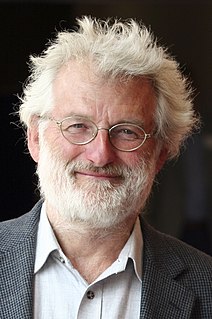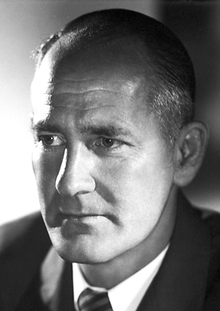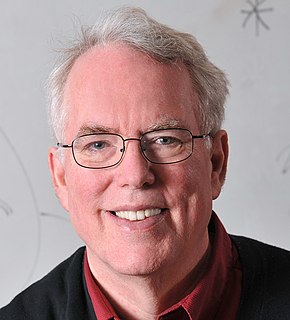
The zebrafish is a freshwater fish belonging to the minnow family (Cyprinidae) of the order Cypriniformes. Native to South Asia, it is a popular aquarium fish, frequently sold under the trade name zebra danio.

Sydney Brenner was a South African biologist. In 2002, he shared the Nobel Prize in Physiology or Medicine with H. Robert Horvitz and Sir John E. Sulston. Brenner made significant contributions to work on the genetic code, and other areas of molecular biology while working in the Medical Research Council (MRC) Laboratory of Molecular Biology in Cambridge, England. He established the roundworm Caenorhabditis elegans as a model organism for the investigation of developmental biology, and founded the Molecular Sciences Institute in Berkeley, California, United States.

Sir John Edward Sulston was a British biologist and academic who won the Nobel Prize in Physiology or Medicine for his work on the cell lineage and genome of the worm Caenorhabditis elegans in 2002 with his colleagues Sydney Brenner and Robert Horvitz. He was a leader in human genome research and Chair of the Institute for Science, Ethics and Innovation at the University of Manchester. Sulston was in favour of science in the public interest, such as free public access of scientific information and against the patenting of genes and the privatisation of genetic technologies.

George Wells Beadle was an American geneticist. In 1958 he shared one-half of the Nobel Prize in Physiology or Medicine with Edward Tatum for their discovery of the role of genes in regulating biochemical events within cells. He also served as the 7th President of the University of Chicago.

Michael Ashburner is a biologist and Emeritus Professor in the Department of Genetics at University of Cambridge. He is also the former joint-head and co-founder of the European Bioinformatics Institute (EBI) of the European Molecular Biology Laboratory (EMBL) and a Fellow of Churchill College, Cambridge.
Elliot Meyerowitz is an American biologist.
Gerald Mayer Rubin is an American biologist, notable for pioneering the use of transposable P elements in genetics, and for leading the public project to sequence the Drosophila melanogaster genome. Related to his genomics work, Rubin's lab is notable for development of genetic and genomics tools and studies of signal transduction and gene regulation. Rubin also serves as a Vice President of the Howard Hughes Medical Institute and Executive Director of the Janelia Research Campus.
Samuel Karlin was an American mathematician at Stanford University in the late 20th century.
George Streisinger was an American molecular biologist and co-founder of the Institute of Molecular Biology at the University of Oregon. He was the first person to clone a vertebrate, cloning zebrafish in his University of Oregon laboratory. He also pioneered work in the genetics of the T-even bacterial viruses. In 1972, along with William Franklin Dove he was awarded a Guggenheim Fellowship award, and in 1975 he was selected as a member of the National Academy of Sciences, the second Oregonian to receive the distinction. The University of Oregon's Institute of Molecular Biology named their main building "Streisinger Hall" in his honor.
The one gene–one enzyme hypothesis is the idea that genes act through the production of enzymes, with each gene responsible for producing a single enzyme that in turn affects a single step in a metabolic pathway. The concept was proposed by George Beadle and Edward Tatum in an influential 1941 paper on genetic mutations in the mold Neurospora crassa, and subsequently was dubbed the "one gene–one enzyme hypothesis" by their collaborator Norman Horowitz. In 2004 Norman Horowitz reminisced that "these experiments founded the science of what Beadle and Tatum called 'biochemical genetics.' In actuality they proved to be the opening gun in what became molecular genetics and all the developments that have followed from that." The development of the one gene–one enzyme hypothesis is often considered the first significant result in what came to be called molecular biology. Although it has been extremely influential, the hypothesis was recognized soon after its proposal to be an oversimplification. Even the subsequent reformulation of the "one gene–one polypeptide" hypothesis is now considered too simple to describe the relationship between genes and proteins.
The Genetics Society of America (GSA) is a scholarly membership society of more than 5,500 genetics researchers and educators, established in 1931. The Society was formed from the reorganization of the Joint Genetics Sections of the American Society of Zoologists and the Botanical Society of America.
Gerald Ralph Fink is an American biologist, who was Director of the Whitehead Institute at MIT from 1990–2001. He graduated from Amherst College in 1962 and received a Ph.D. from Yale University in 1965, having elucidated the histidine pathway in the yeast, Saccharomyces cerevisiae. After postdoctoral study at the National Institutes of Health with Bruce Ames on the regulation of the histidine operon of Salmonella, in 1967 he joined Cornell University where he became a Professor of Genetics and pursued the study of the HIS4 region of yeast. In 1982 he became a founding member of the Whitehead Institute and Professor of Genetics at MIT. Dr. Fink was elected to the United States National Academy of Sciences in 1981, to the Institute of Medicine in 1996, and to the American Philosophical Society in 2003.

Robert Hugh "Bob" Waterston, is an American biologist. He is best known for his work on the Human Genome Project, for which he was a pioneer along with John Sulston.

Fred Sherman was an American scientist who pioneered the use of the budding yeast Saccharomyces cerevisiae as a model for studying the genetics, molecular biology, and biochemistry of eukaryotic cells. His research encompassed broad areas of yeast biology including gene expression, protein synthesis, messenger RNA processing, bioenergetics, and mechanisms of mutagenesis. He also contributed extensively to the genetics of the opportunistic pathogen Candida albicans.

The George W. Beadle Award is a prestigious scientific prize given by the Genetics Society of America to individuals who have made “outstanding contributions” to Genetics. The Award was established in 1999 and named in honor of George Wells Beadle, who won the Nobel Prize in Physiology or Medicine in 1958.
Joseph R. Ecker is an American plant biologist and molecular biologist. He is Professor of Plant Molecular and Cellular Biology Laboratory and Director of the Genomic Analysis Laboratory at the Salk Institute for Biological Studies. He is also an Investigator of the Howard Hughes Medical Institute. He holds the Salk International Council Chair in Genetics.
Herschel Kenworthy Mitchell was an American professor of biochemistry who spent most of his career on the faculty at the California Institute of Technology. He was one of many researchers interested in vitamin B6 in the early 1940s and is credited as one of the discoverers of folic acid. He later focused his research on Drosophila, in particular the genetics and biochemistry of the heat shock response.

R. Scott Hawley is an American geneticist and investigator at the Stowers Institute for Medical Research in Kansas City, Missouri, a member of the US National Academy of sciences and fellow of the American Association for the Advancement of Science. He has been President of the Genetics Society of America, and leads a research team focused on the molecular mechanisms that regulate chromosome behavior during meiosis.
Julia Anne Horsfield is a New Zealand biochemist and developmental geneticist. She is professor of pathology at the University of Otago and director of Genetics Otago and the Otago Zebrafish Facility.








